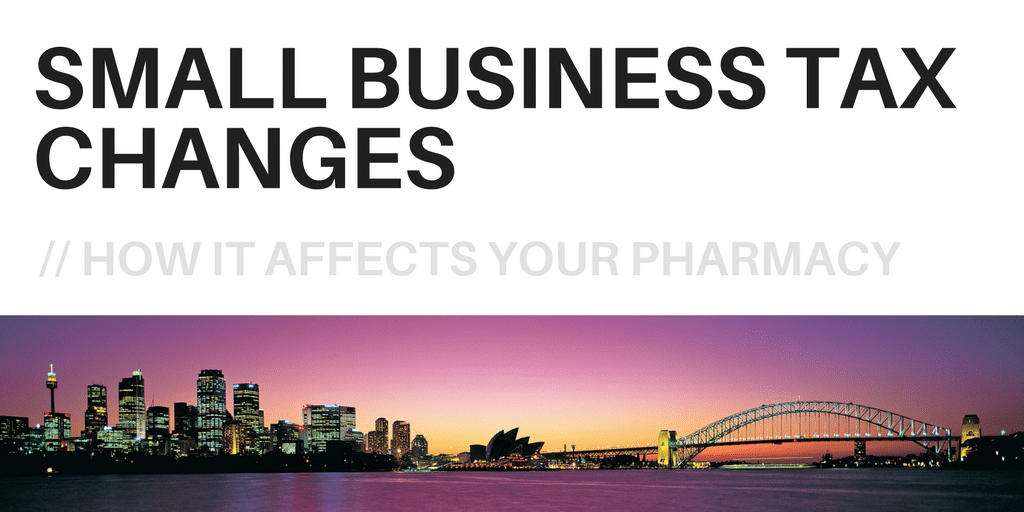The start of every year brings new tax changes that the Canadian government implements.
These tax changes affect how much money you’ll receive every payday in 2019.
As a result, you’ll likely be scratching your head when you see that your net pay is a little lower than usual on the first pay run of the year!
Here’s why.
These are tax changes that came into effect January 1, 2019 that affect Canadian employees and business owners alike.
Increased CPP Contributions
CPP contributions will gradually increase by a total of 1% over a period of five years up to 2023.
For employees, increased CPP contributions means you’ll receive a slightly lower paycheque than usual.
For those who earn $57,400 or more in 2019, that means about $155 more per year in CPP contributions.
You can think of this as an added cost right now, but you’re actually going to get a larger CPP payment in the future when you retire.
Why is this happening?
Simply put, this is due to Canadians not saving nearly enough for retirement.
So the government has implemented this CPP enhancement as a way to increase retirement income for Canadians.
For business owners, your employer portion increases as well and this means higher payroll expense for 2019 and should be incorporated into your 2019 budget plans.
For those who use outsource payroll to companies like ADP, they will take care of the increased deductions for you and your staff automatically.
If you do your own payroll, here are the new rates, but be sure to consult with your accountant before implementing the new rates.
| Year | YMPE | Employer Rate | Employee Rate | Max Dollar Amount | ||
| 2018 | $55,900 | 4.95% | 4.95% | $2,593 | ||
| 2019 | $57,400 | 5.10% | 5.10% | $2,748 |
Decreased EI Premium Rate
Employment Insurance (EI) premiums have decreased in 2019.
The EI rate is being reduced from 1.66% to 1.62%.
However, the annual maximum annual insurable earnings has increased to keep pace with inflation, so there will be very slight increase of EI premiums on your paystub.
For business owners, if you have a dedicated payroll service like ADP, they’ll take care of these new rates for you.
If you do your own payroll, be sure to apply this new rate for your employees after consulting with your accountant.
| Year | Max. Insurable Earnings | Rate | Max Employer Premium | Max Employee Premium | ||
| 2018 | $51,700 | 1.66% | $1,201 | $858 | ||
| 2019 | $53,100 | 1.62% | $1,204 | $860 |
Increased TFSA Contribution Room
Your investments inside a Tax Free Savings Account (TFSA) grow tax free and when you withdraw, you don’t have to pay any tax.
Effective January 1, 2019, the contribution limit has increased to $6,000 per year.
Did you make a withdrawal last year, 2018? Most people don’t know that whatever you withdraw from a TFSA in one year, you get that contribution back next year.
For example, if you withdrew $10,000 in 2018, then this year your contribution limit increases by this $10,000 amount, in addition to your $6,000 annual contribution limit for a total of $16,000 in 2019.
You can always logon to your CRA “My Account” to see the exact contribution room available to you and potentially catch up for any missed years.

New Program For Tax Avoidance
Changes have been made to the Voluntary Disclosure Program (VDP).
Don’t know what that is?
It’s a program to help Canadians who may not have been completely honest about their tax situation in the past, i.e. those who have been avoiding tax and want to come clean.
If that’s you, you’re now able to apply under a new “limited program” and face lesser penalties.
If you come clean, you’ll still have to pay the tax and interest owed, however you may be eligible for relief from prosecution or penalties that you would normally face.
Increases to Canada Child Benefit
Do you have children and receive the monthly Canada child benefit?
Good news, your benefit amount will be indexed to inflation going forward.
The amount each family receives each year depends on how many children you have and family net income.
The government applies their magic formula behind the scenes and resets your monthly amount around every June/July, a few months after you have filed your personal tax return.
Claiming Service Animals as a Medical Expenses
Do you require an animal specially trained to perform tasks to help you cope with an impairment?
If so, you’ll be able to claim related expenses as a medical expense as long as it was incurred after 2017.
Related expenses could include the cost to train the animal, along with the associated expenses like food and cage for the animal.

Decrease to the Small Business Tax Rate
The business tax rate has decreased for small businesses in every province in Canada.
Remember that the small business tax rate = federal small business tax rate + provincial small business tax rate.
The Federal small business tax rate has gone down to 9%.
The Provincial small business tax rate varies by province.
In Ontario, the combined small business tax rate for your pharmacy is now 12.5% per year.
| 2017 | 2018 | 2019 | |
| Federal | 10.5% | 10% | 9% |
| Ontario | 4.5% | 3.5% | 3.5% |
| Combined | 15% | 13.5% | 12.5% |
Changes on Passive Investment Income Inside Corporations
If you generate passive investment income of $50,000 or more inside your corporation (or related corporations), you will be faced with higher business tax.
Any income earned that isn’t used for active business purposes is considered passive income, such as:
- Investment portfolios (stocks, bonds, ETFs, mutual funds, etc.)
- Rental properties (commercial units and residential units)
If you earn passive investment income of $50,000 or more per year, your small business deduction limit of $500,000 will decrease by $5 for every $1 over this new limit.
Ontario, however, didn’t follow the other provinces and has elected to reduce only the federal portion of the small business deduction limit; the provincial small business limit will remain the same.
For example, if you live in Ontario, your business tax rate is now 12.5% on the first $500,000 of active business income.
With this new tax change, if you generate $150,000 in annual passive investment income, your business tax rate will increase to 18.5% (15% federal tax rate + 3.5% provincial tax rate) on all active business income..
Compare two tax rates and the difference represents an increase in tax of about $30,000 every single year.
How can you mitigate this new tax change?
Here are two ways to tax shelter your investments and not get hit with this new rule: Individual Pension Plans and Corporate Insured Retirement Programs.
Increase in Tax Rate on Dividends From Small Businesses
The decrease to the small business tax rate is great for small businesses but many business owners do not know about a little something called tax integration.
The goal of tax integration is to ensure that the Canadian personal and corporate tax system is integrated to yield the same overall amount of tax regardless of the structure used to earn the income, like salary vs dividend for example.
Since the small business tax rate has decreased, there is also an increase in the personal tax rate on dividends paid to yourself, called non-eligible dividends.
For small business owners, if you normally pay yourself dividends, this means that you’ll pay more personal tax and receive a lower after-tax dividend amount.
The higher personal tax amount offsets the corporate tax “savings” of the lower small business tax rate of your corporation.This offsetting transaction preserves tax integration.
In Ontario, the combined (Federal and Provincial) top marginal personal tax rates for 2019 are:
| Taxable Income | 2018 | 2019 |
| Income & Interest | 53.53% | 53.53% |
| Capital Gains | 26.76% | 26.76% |
| Eligible Dividends | 39.34% | 39.34% |
| Non-eligible Dividends | 46.65% | 47.40% |
EHT Exemption Increase
The Employer Health Tax (EHT) exemption for private sector employers, like community pharmacies, will increase from $450,000 to $490,000 effective January 1, 2019.
In Ontario for example, if your total payroll is more than $450,000 but less than $490,000, you will see your EHT payment reduced by an average of $690.

Conclusion
Every year, there are new tax changes that impacts how much money we take home.
What are you doing to pay less tax this year?
How do you know if you are maximizing your tax home pay?
Most people think that their accountant is doing everything s/he can to help them save on taxes but the reality is, most accountants don’t do that.
Most accountants are too busy preparing tax returns or doing your bookkeeping, meaning they don’t have time to sit down with you and look at your overall big picture.
How many times have you gone to see your accountant to just drop off your tax papers to get your return done?
That isn’t tax planning, that’s only tax return filing.
As a result, many Canadians overpay tax every single year and don’t have a clue.
What if you could be saving $1,000 to $10,000+ in tax every year, what would that mean to you?
Over the next 10 years, that could be an extra $10,000 to $100,000 that stays in your pocket instead of going to the tax man.
If you want to pay less tax this year, leave us a message or book a free call with us.

Ricardo Ardiles
About the Author
Ricardo helps pharmacists like you pay less tax, improve the profitability of your pharmacy, and take your wealth to the next level.
Prior to starting Pharma Tax, Ricardo worked at another accounting & wealth management firm focused on dentists. Pharmacists were coming on as referrals and all said the same thing: what you guys are doing for dentists, we need that specialist for pharmacy. Hence, Pharma Tax was born.
Follow Pharma Tax on Social Media
- 2021 Budget Breakdown for Pharmacy Owners - April 29, 2021
- How This Pharmacy Owner Is Now Saving $22,209 In Taxes & Interest This Year - April 9, 2021
- Does Your Pharmacy Qualify For the Canada Rent Subsidy? - November 22, 2020


